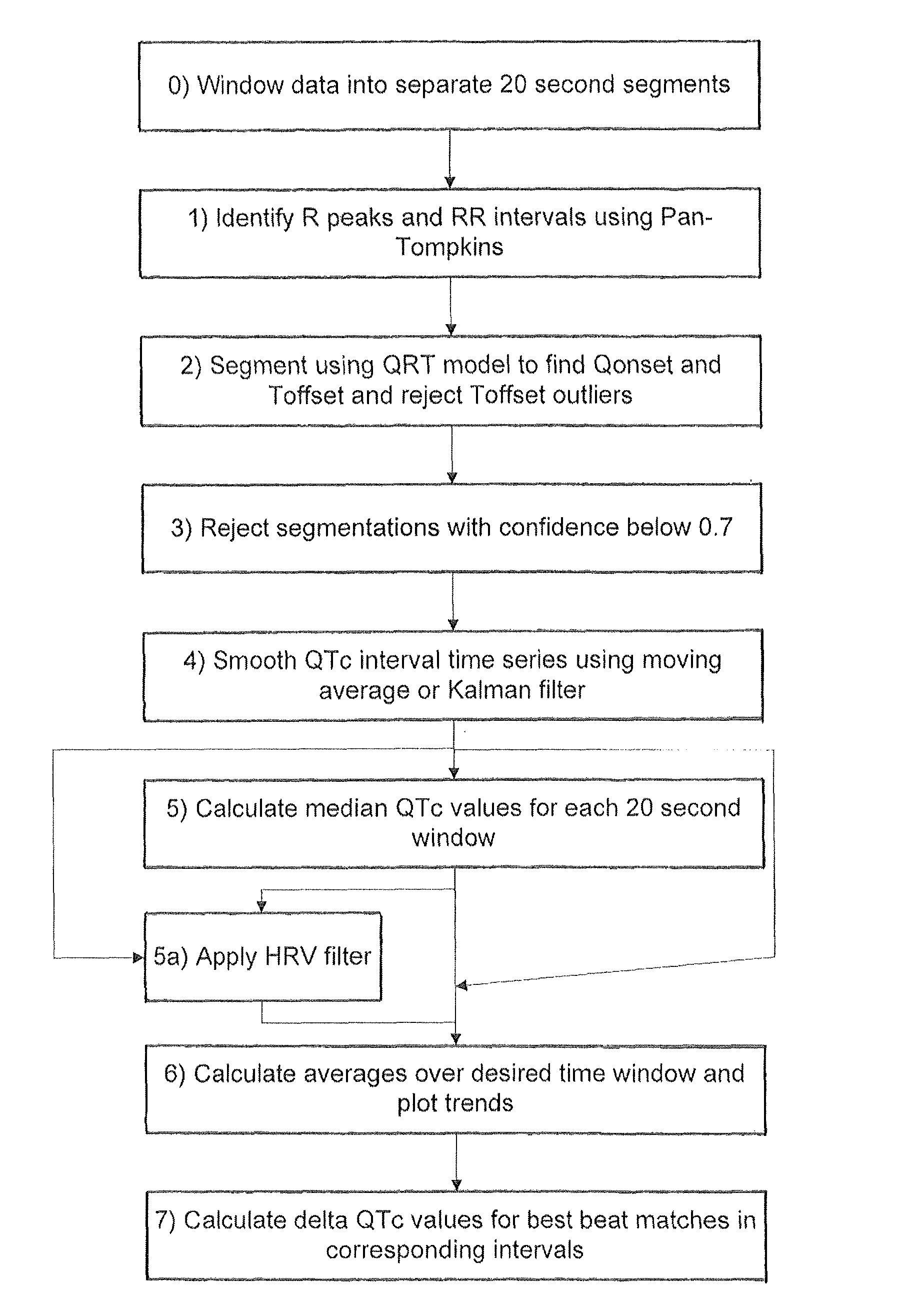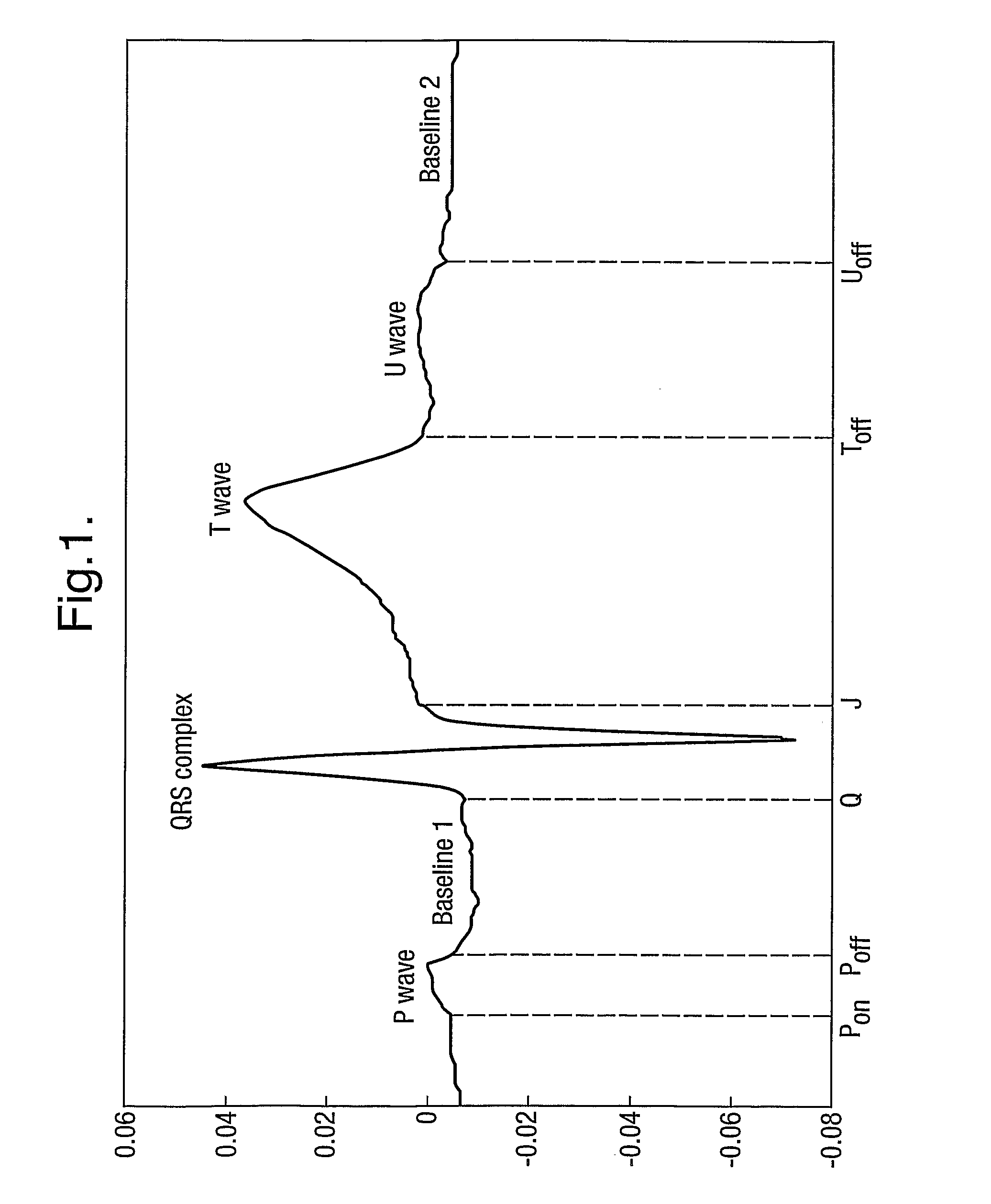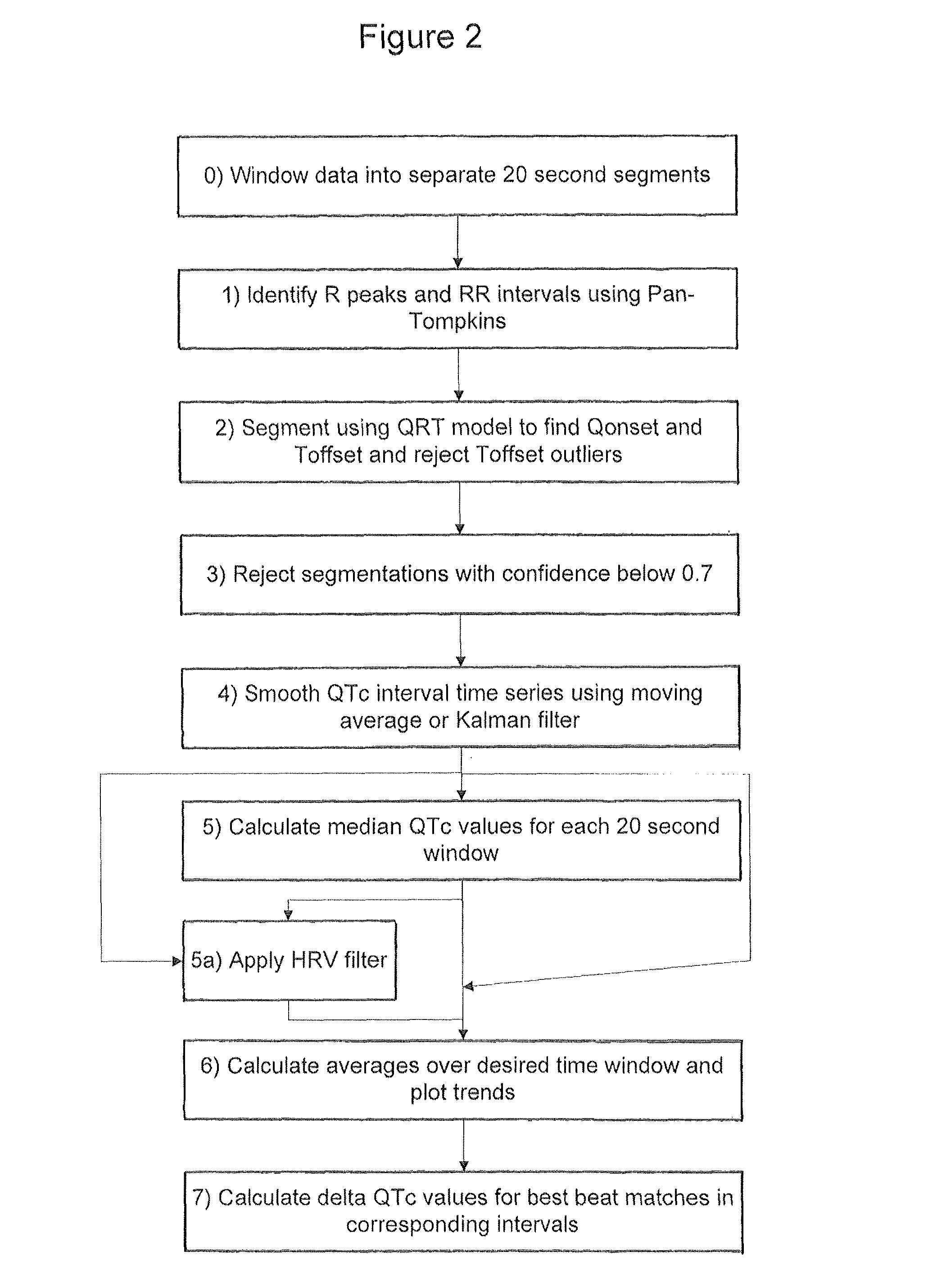Method of biomedical signal analysis including improved automatic segmentation
a biomedical signal and automatic segmentation technology, applied in the field of biomedical signal analysis, can solve the problems of time-consuming and expensive expert analysis, complex and highly variable signals, and difficult automated analysis
- Summary
- Abstract
- Description
- Claims
- Application Information
AI Technical Summary
Benefits of technology
Problems solved by technology
Method used
Image
Examples
Embodiment Construction
[0043]An embodiment of the invention will now be described which applies the various aspects mentioned above to the analysis of 24 hour Holter recording of 12 channel electrocardiograms (ECGs).
[0044]In the following example the segmentation of the ECG relies on the use of a Hidden Markov Model. The published patent application WO 2005 / 107587, and the papers Hughes NP and Tarassenko L. (2004). Automated QT Interval Analysis with Confidence Measures. Computers in Cardiology, pp. 31-34 and Hughes NP, Tarassenko L & Roberts S. (2004). Markov Models for Automated ECG Interval Analysis. Advances in Neural Information Processing Systems, vol. 16, Thrun S, Saul L & Scholkopf B (eds), MIT Press., which are incorporated herein by reference, describe how to apply a Hidden Markov Model for the entire extent of the human heart beat waveform as illustrated in FIG. 1. That technique detects the various time points in FIG. 1 corresponding to transitions between different states, in particular Ponse...
PUM
 Login to View More
Login to View More Abstract
Description
Claims
Application Information
 Login to View More
Login to View More - R&D
- Intellectual Property
- Life Sciences
- Materials
- Tech Scout
- Unparalleled Data Quality
- Higher Quality Content
- 60% Fewer Hallucinations
Browse by: Latest US Patents, China's latest patents, Technical Efficacy Thesaurus, Application Domain, Technology Topic, Popular Technical Reports.
© 2025 PatSnap. All rights reserved.Legal|Privacy policy|Modern Slavery Act Transparency Statement|Sitemap|About US| Contact US: help@patsnap.com



